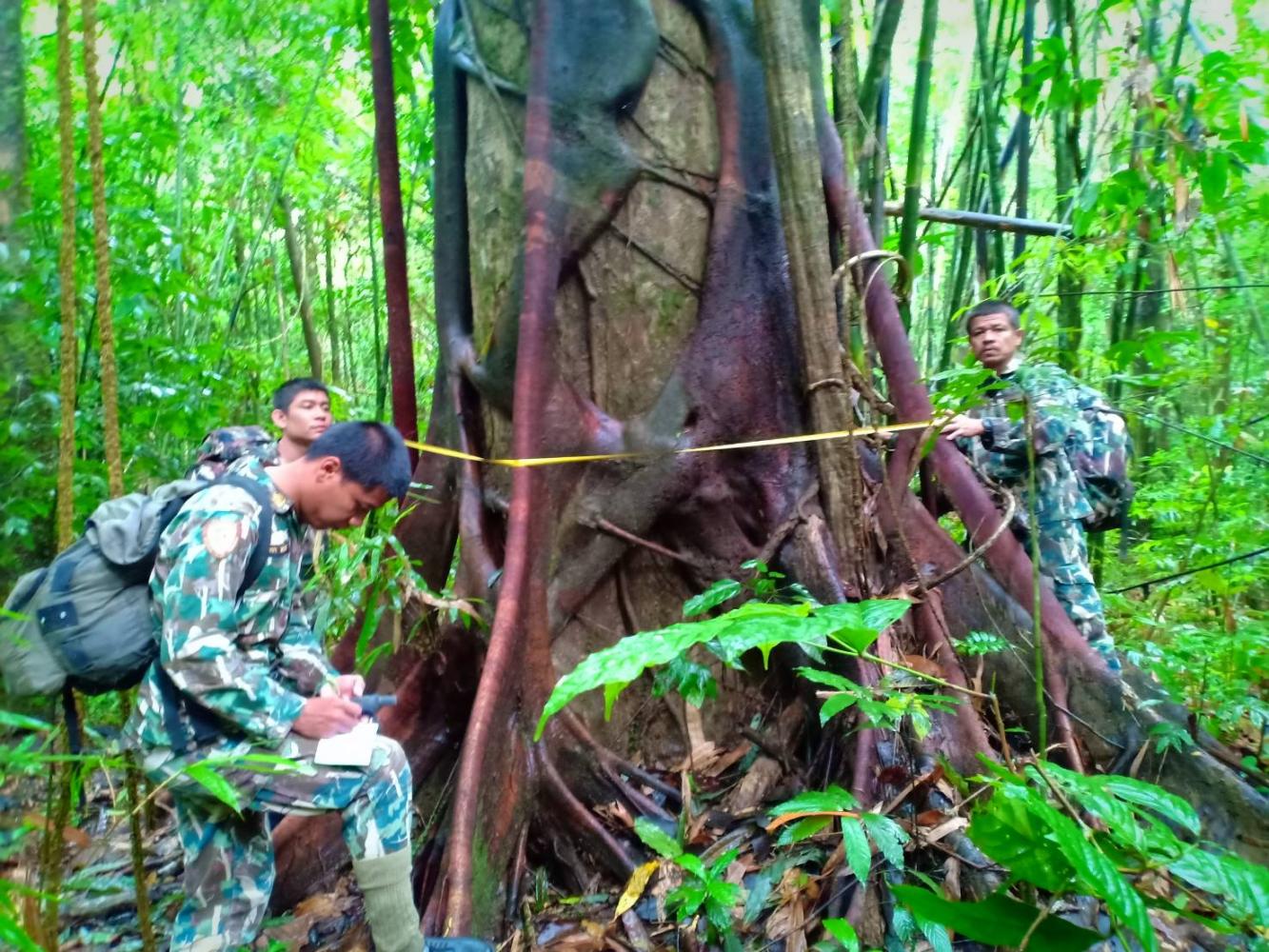
Khao Sok forest complex is considered the Guilin of Thailand for its picturesque mix of limestone cliffs and untouched forests jutting out of the still waters of Ratchaprapha dam.
Located in the upper regions of the South, the forest complex stretches across a number of national parks in the area, namely Khao Sok, Sri Phang Nga and Kaeng Krung as well as the Khlong Saeng, Khlong Nakha and Khlong Yan wildlife sanctuaries.
The largest swathe of virgin rainforest in southern Thailand, which covers some 2.9 million rai of land, is also a sanctuary for over 200 wild elephants, Asian black bears and Malayan tapirs, along with about 90 reptile and countless bird species.
These animals can now seek refuge within the complex's boundaries, under the watchful eyes of the Department of National Parks, Wildlife and Plant Conservation (DNP), which began patrolling the forest complex about a decade ago.
Since then, the number of poaching incidents has gone down and wild animals have begun to return -- especially to Khao Sok National Park, which has been hailed as a success story in wildlife conservation.
Smart Patrolling
Patrolling forests isn't easy. In the past, efforts to protect forests were hampered by the lack of manpower, with each officer having to patrol hundreds of rai of forested land.
This may explain why animal poaching and wildlife trafficking was rampant in Thai forests.
To deal with the shortage, "smart patrolling" was introduced about 20 years ago at Huay Kha Kaeng Wildlife Sanctuary, a Unesco World Heritage site.
The system uses digital mapping and global positioning system (GPS) technology to monitor areas where poachers are known to gather, relaying this information to a central computerised database to be analysed.
DNP decided to introduce the smart patrolling system at Khao Sok National Park -- the largest and most vulnerable forest reserve within the complex -- about a decade ago in response to the rising number of animal and timber poaching incidents in the park.
Since then, Khao Sok National Park has become a model for smart forest patrols and conservation in the South.
Khao Sok Model
Viroj Rothanajinda, chief of Khao Sok National Park, said they owe much of their success to technological improvements, teamwork, good management plans and cooperation with local communities.
"The smart patrolling system enables our rangers to survey and cover 90% of the 400,000-rai park. Our rangers regularly patrol the area, except the tops of mountains which are too high for rangers to climb up safely," he said.
Mr Viroj said forest rangers don't just wander around the forest, armed with a gun, a GPS tracker and camping gear -- each have specific tasks to complete.
"For instance, a team might be monitoring banyan trees, which is a major source of food for hornbills," he said.
"[Khao Sok] park is a prime hornbill habitat, home to eight out of the 13 hornbill species found in Thailand."
According to the DNP, the forest complex is home to over 400 bird species -- two-thirds of all bird species found in Thailand-- and 96 out of the approximately 100 reptile species found in the country.
It is also home to the critically-endangered helmeted hornbill.
Blessed with a wide variety of rare birds and wild animals, Khao Sok National Park gained popularity a major bird-watching and forest-trekking site in the country.
"With better management, local communities can benefit more from their beautiful natural environment," said Mr Viroj.
Forest rangers
Chaipol Palakachain is one of the 185 forest rangers taking care of the 400,000-rai forest reserve.
He began working as a ranger at the age of 24, and at age 45, he is now the chief of the 6th Forest Protection Unit.
He heads a team of six people and they are responsible for protecting about 40,000 rai or 10% of the total area of the park.
Twice a month, the team sets out to patrol the forest for two weeks, relying on their GPS trackers to stop them from getting lost and prevent them from patrolling the same area twice.
In addition to their GPS trackers, each ranger also carries firearms and camping gear, along with 20 kilogrammes of basic staples such as food, water and medicines.
As they patrol the forest, each ranger will record the plants and animals they encounter, along with any other relevant geographic information in the national park's centralised database.
According to Mr Chaipol, better information will allow rangers to come up with a more detailed map, which will help them protect the park in future patrols.
"I've worked here for over 20 years, and I've seen how the area's biodiversity has improved. More animals can be seen now, from boars to elephants to tapirs," he said.
Each ranger earns about 10,000 baht per month, and an additional 600 baht before they set off on their patrols.
"Our salaries may not be much, but we get to see things what other people may never get a chance to see," Mr Chaipol says proudly.